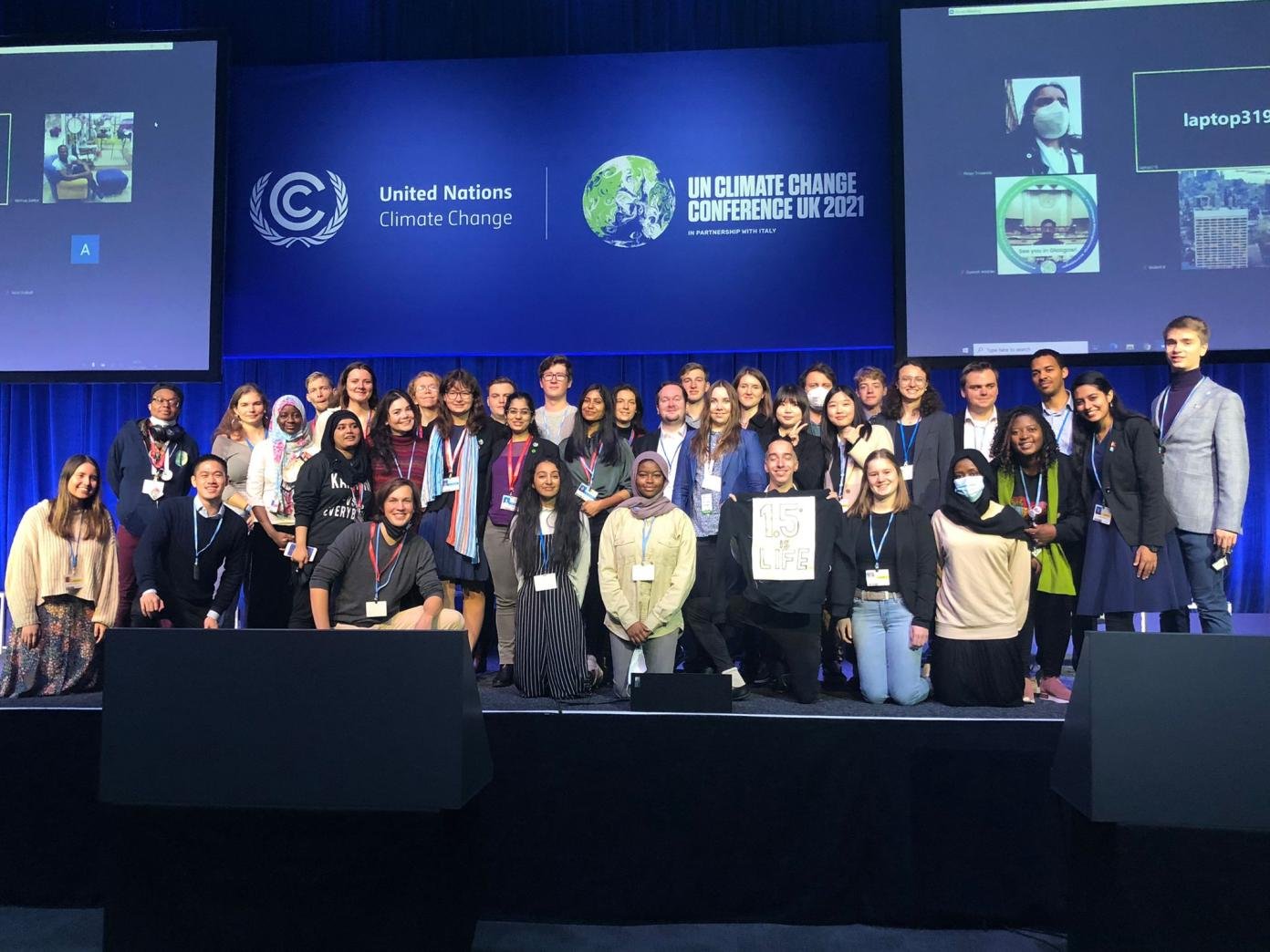COP 26 Youth Working group – Credits UNDP
KAMPALA, Uganda — In April, temperatures in Uganda’s capital reached record highs, sending vulnerable residents scrambling for shade in informal settlements with no cooling infrastructure. Just weeks later, a rare cyclone swept across Lake Victoria, disrupting fishing communities and capsizing boats. And in the western district of Kasese, flash floods once again uprooted entire villages, leaving behind a trail of mud, grief, and government silence.
“We’re not adapting,” says Maria Nyongesa, a community mobilizer in Kasese. “We’re surviving what we can’t see coming.”
And yet the warning signs were there—encoded in maps produced by Uganda’s National Working Groups (NWGs), which had identified both heat-vulnerable zones and flood-prone corridors. The maps were distributed. Workshops were held. Promises made. But, as Nyongesa puts it, “nothing changed.”
Uganda is not alone. From hurricane-scarred neighborhoods in New Orleans to wildfire-threatened Indigenous lands in British Columbia, a new architecture of climate governance is taking shape—one that claims to be participatory, data-driven, and just. But an investigation has found that these National Working Groups—tasked with translating climate science into action—are often hollowed out by political fragmentation, donor dependency, and shallow community engagement.
Behind the Maps: Promises, Politics, and Broken Feedback Loops
In the U.S., advanced geospatial tools like FEMA’s Hazus or NOAA’s Climate Toolkit map risks with laser precision. But ask residents in Louisiana’s Lower Ninth Ward, and you’ll hear a different story. “They mapped us into danger, then left us there,” says Jerome Williams, a climate organizer. Federal NWGs held workshops. Plans were drawn. But budget shortfalls and state-level resistance derailed implementation. “Maps without action are a form of negligence,” Williams says.
In Canada, NWGs are partnering with Indigenous communities in what government officials call a “Two-Eyed Seeing” approach—blending Western science with Indigenous knowledge. But Indigenous Guardian Elena Thomas, who leads workshops in British Columbia, says the language of partnership often masks deeper problems. “They consult us,” she says, “but they don’t shift power. Our knowledge becomes a checkbox. Not a mandate.”
The Donor Dilemma: Who Really Owns Climate Policy in Uganda?
Uganda’s NWGs are hailed as participatory models. They hold workshops where farmers chart climate futures and map local hazards using mobile GIS tools. But behind the scenes, most funding—and much of the policy language—comes from international donors. The result? Policies that reflect donor logic more than local realities.
When we reviewed three years of climate finance records and found that more than 70% of Uganda’s adaptation programs were tied to donor-specific reporting frameworks, not the country’s own National Adaptation Plan. According to Dr. Ronald Kaggwa, a policy researcher in Kampala, “We’ve outsourced our resilience. The NWGs have become translators of donor priorities, not enforcers of community agency.”
Climate Workshops: Participation or Performance?
In all three countries, local adaptation workshops are the face of inclusion. In Miami, NWGs host “resilience design charrettes”; in Uganda, they conduct participatory scenario planning; in Yukon, Canada, workshops include Indigenous youth tracking permafrost melt. But without mechanisms to integrate outcomes into binding policy, these gatherings risk becoming symbolic.
In Miami, we found that recommendations from over 15 workshops since 2019 were not incorporated into the city’s formal Climate Adaptation Plan. One planner, speaking anonymously, described the process as “inclusion theatre—photographs of Black and Brown faces in reports that no one reads.”
Carbon Markets and Climate Colonialism
The newest frontier for NWGs is climate finance. Uganda is piloting community-based carbon credit schemes tied to agroforestry. But here too, external control looms. Most of the credits are verified through European standards, and proceeds flow through intermediaries.
In one district, local leaders said they had planted thousands of trees as part of a REDD+ initiative—but had received no payment. “We are greening the planet for someone else’s net-zero,” one farmer said. NWGs facilitate, but they do not control the terms. As one policy analyst put it, “Carbon finance is the new frontier of adaptation colonialism.”
Lessons from the Margins: Redrawing the Blueprint
Despite these challenges, our analysis reveals that NWGs do offer a rare institutional mechanism to reimagine climate governance—if they are given the mandate, resources, and autonomy to center justice.
From Uganda’s district-level resilience planning to Indigenous-led fire corridor mapping in British Columbia, the potential is real. But so are the barriers: jurisdictional fragmentation, donor dependency, and tokenistic engagement.
If climate adaptation is the frontier of global survival, NWGs are drawing its first maps. The question is: will those maps liberate—or exclude?
This story was written as a contributory piece to a scholarly article written for GCRI Canada and has been published and co- authored by the Uganda National Working Group and GCRI Media team. Read the full article here: https://lnkd.in/gukQNhwB
If you’re working at the intersection of climate adaptation, risk governance, or social equity, I’d love to hear your reflections!
Sources Cited:
• Uganda Ministry of Water and Environment (2022)
• Government of Canada (2023). National Adaptation Strategy
• U.S. GAO Report on BRIC and Justice40 (2022)
• Bartlett et al. (2012), Latulippe & Klenk (2020), Whyte (2020)

Leave a Reply